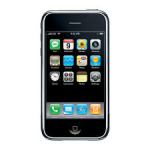 Back in 2007, I was fortunate to be in the audience in San Francisco’s Moscone Center when Steve Jobs stood up and released the first version of the Apple iPhone.
Back in 2007, I was fortunate to be in the audience in San Francisco’s Moscone Center when Steve Jobs stood up and released the first version of the Apple iPhone.
That device genuinely raised the bar. It was a watershed in the design and interaction model of a portable computing device. No mobile device company has designed a mobile phone or tablet device since then, without some level of reference to and comparison to the iPhone.
Model S is the product of a company lead through the rare talents of another visionary entrepreneur, Elon Musk.
When looking at this vehicle, it becomes immediately clear that this product – and its design team – will have a comparable impact in the transport sector over the coming few decades.
The Model S design – and interaction model with the driver – uses software as the key to defining the personality and operational characteristics of the hardware.
This is made obvious from the moment one sets eyes upon the massive touchscreen user interface (itself an obvious evolutionary descendant of the Apple iPad), sitting front and centre in the cabin of the car.
In this context, the huge touchscreen isn’t just a Silicon Valley gimmick. Rather, it is the software-driven window to future innovation in terms of how the car and its occupants interact.
These vehicles are able to have their features and functions continue to evolve, automatically and remotely, after their delivery to customers.
Downloadable software updates are normal and expected for smartphones and computers, but it’s revolutionary for cars.
In conventional car companies, things don’t work this way. The design of cars, and the way these cars interact with their drivers, is effectively frozen at the point of initial sale.
(Very occasional) updates that might occur with a conventional car are performed in a repair shop, by men in white coats, using dedicated updating devices (or replacing modules entirely) and only when there is a need to fix something broken.
The current attitude of the car industry is – ‘want new software or a better user interface? Buy a new car’. The attitude of Tesla is – ‘Good morning Tesla owner. Your new car features were updated overnight while you were sleeping. Want to check those out? Let’s go!’
In a conventional car company, innovation happens in the next, new car to be designed, rather than continuing to occur concurrently in the existing models on the road.
Even the GPS navigation in the car industry generally is primitive, still mostly using expensive, outdated, static maps stored under the passenger seat on a DVD Drive. Do you remember DVD drives? Your computer used to have one.
Model S uses Google Maps for navigation (of course), including real-time traffic congestion data. The latest Model S software release adds calculations using global terrain elevation data to decide what percentage of your currently available electrical energy is needed to reach your destination – and return – without stress.
In two years Tesla has come from a standing start to reach feature parity with pretty much every advanced driving, navigation, and safety feature on offer from the best existing car manufacturers in the world.
Features that have taken decades to be developed as dedicated hardware modules in other cars have been swept with relative ease into a kit-bag of the Model S – these are all just software features that turn up in successive updates over the Internet.
Consequently, Tesla Motors is on a software-fuelled trajectory that should see them breezing right past the conventional car industry in terms of features and functions over the coming years (just as their car already breezes past most others on the highway).
Think back to 2007, and consider the pace of innovation which has driven the path from the first generation iPhone through to the device in your pocket right now. Now, imagine where the transport industry will move to, 25 years from now, led by products like the software-fuelled, hardware platform inside Tesla cars.
It is a brave person who can predict what the car of 2040 might look like, but one thing is for sure – its going to be an interesting ride!




You must be logged in to post a comment.